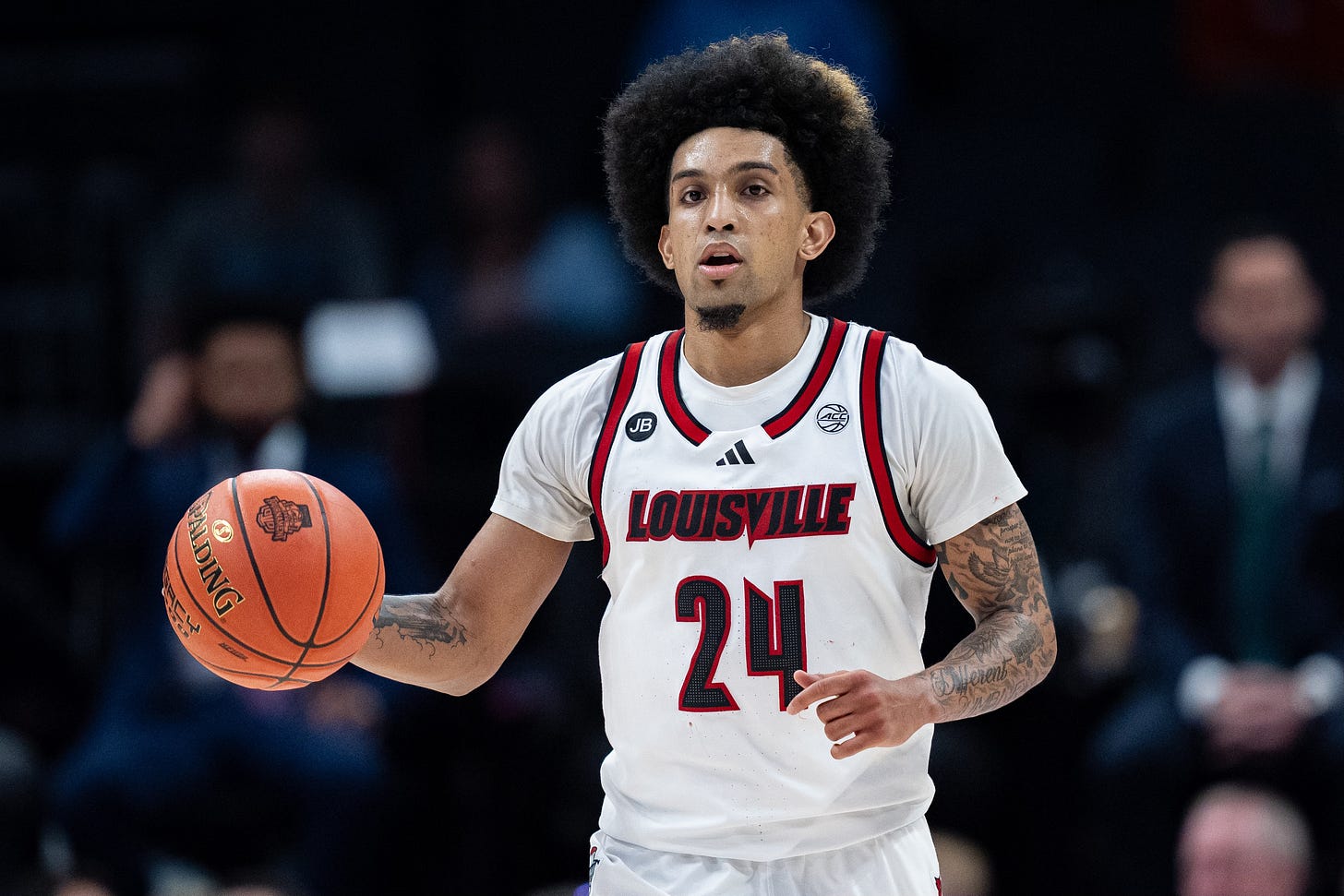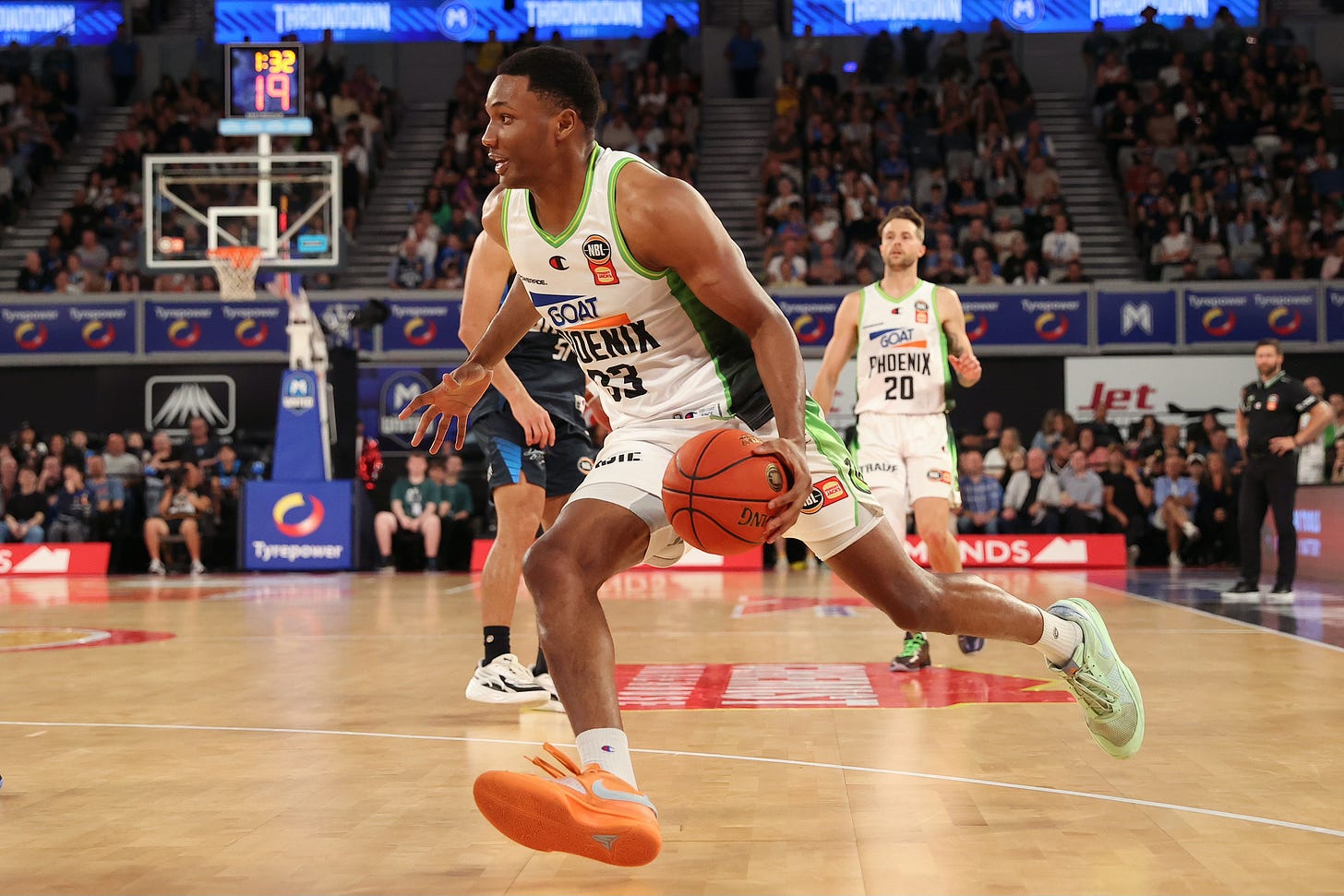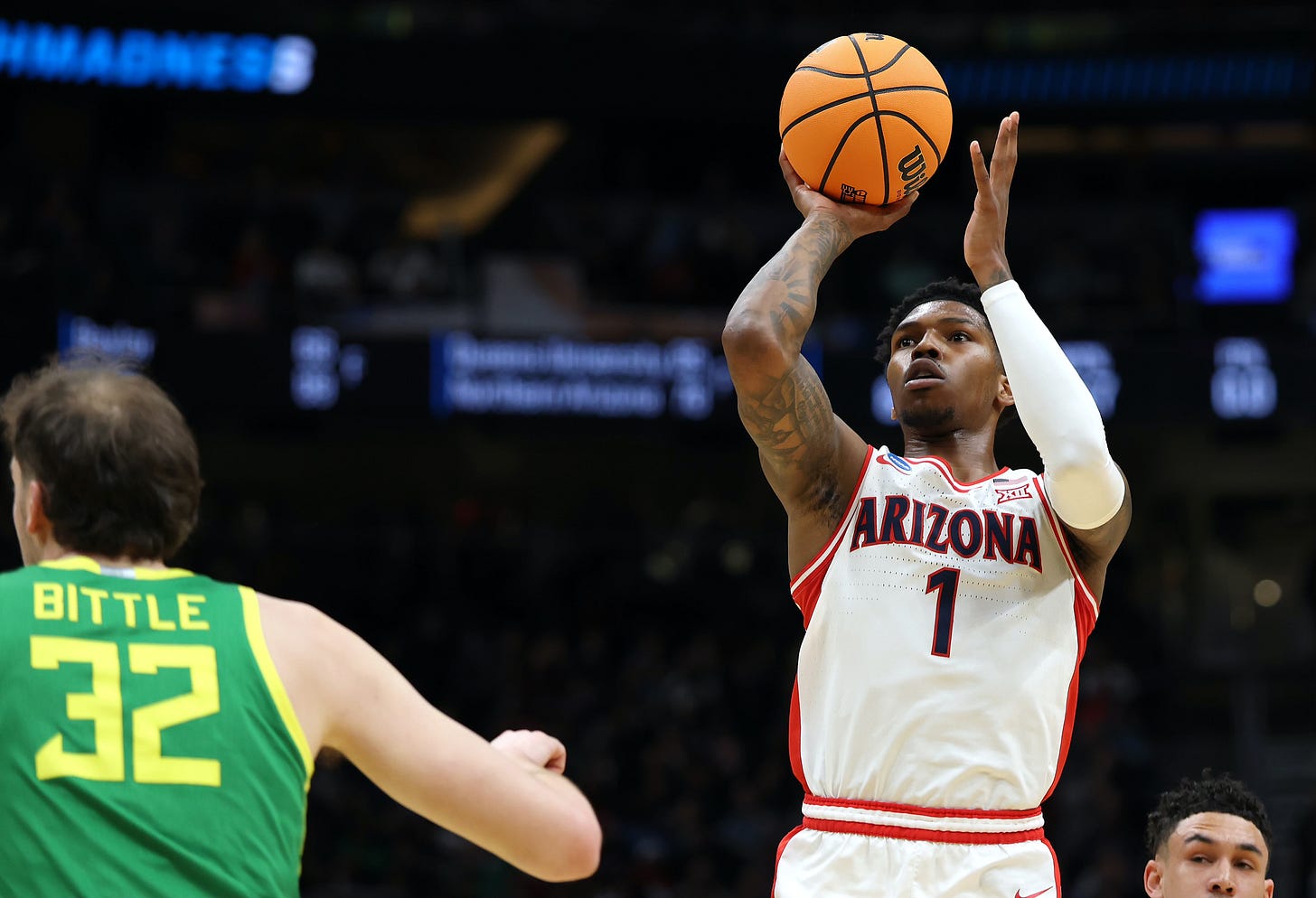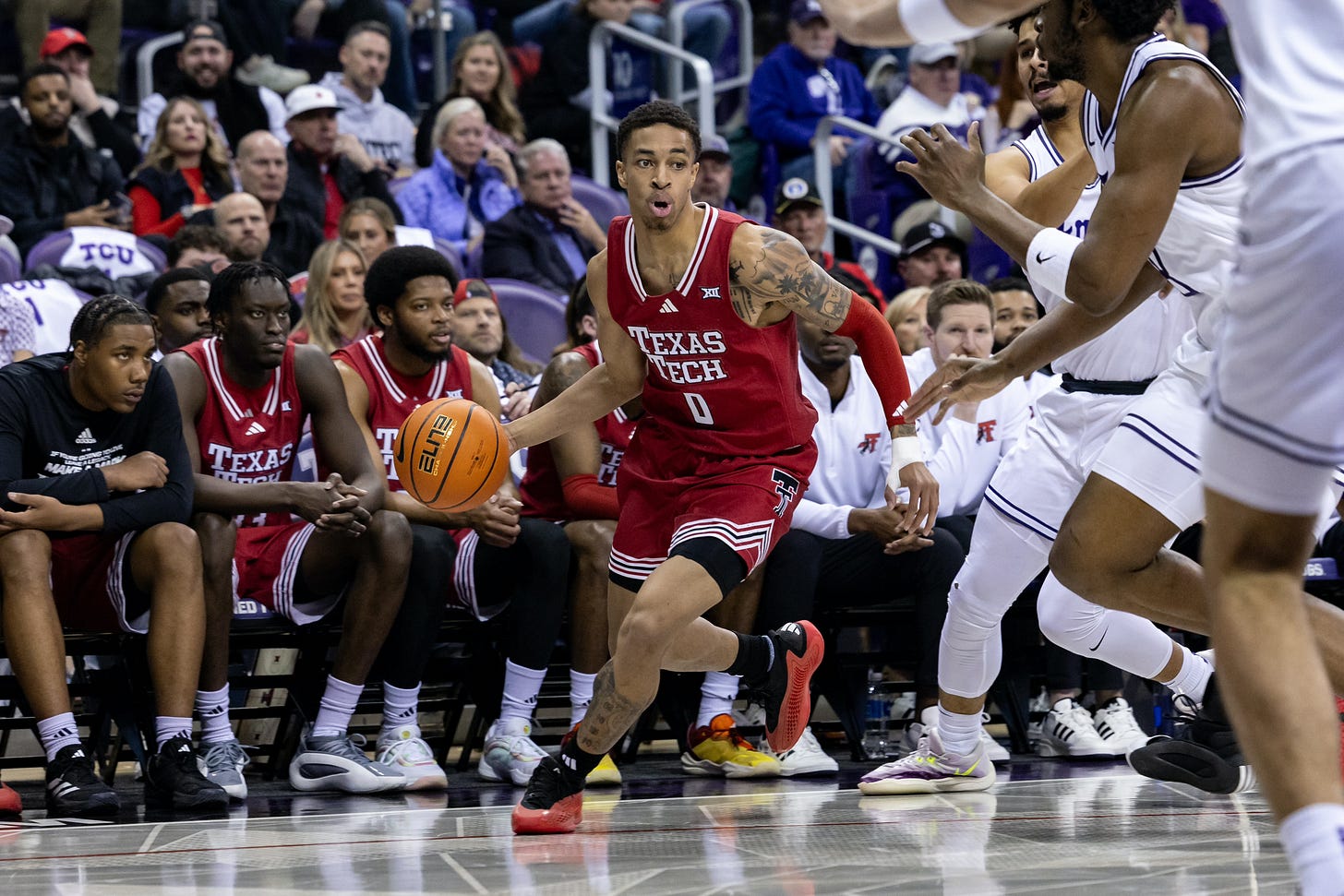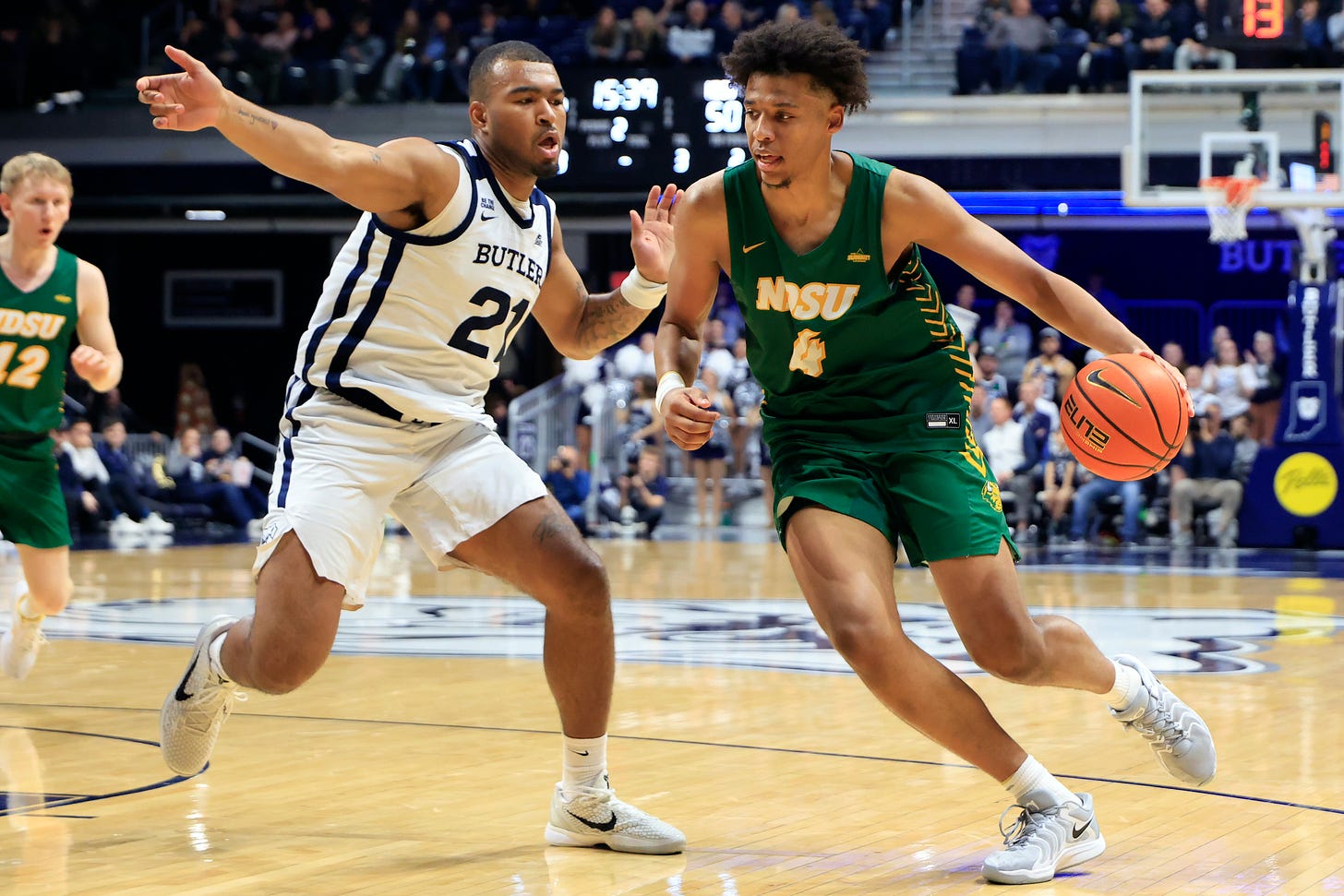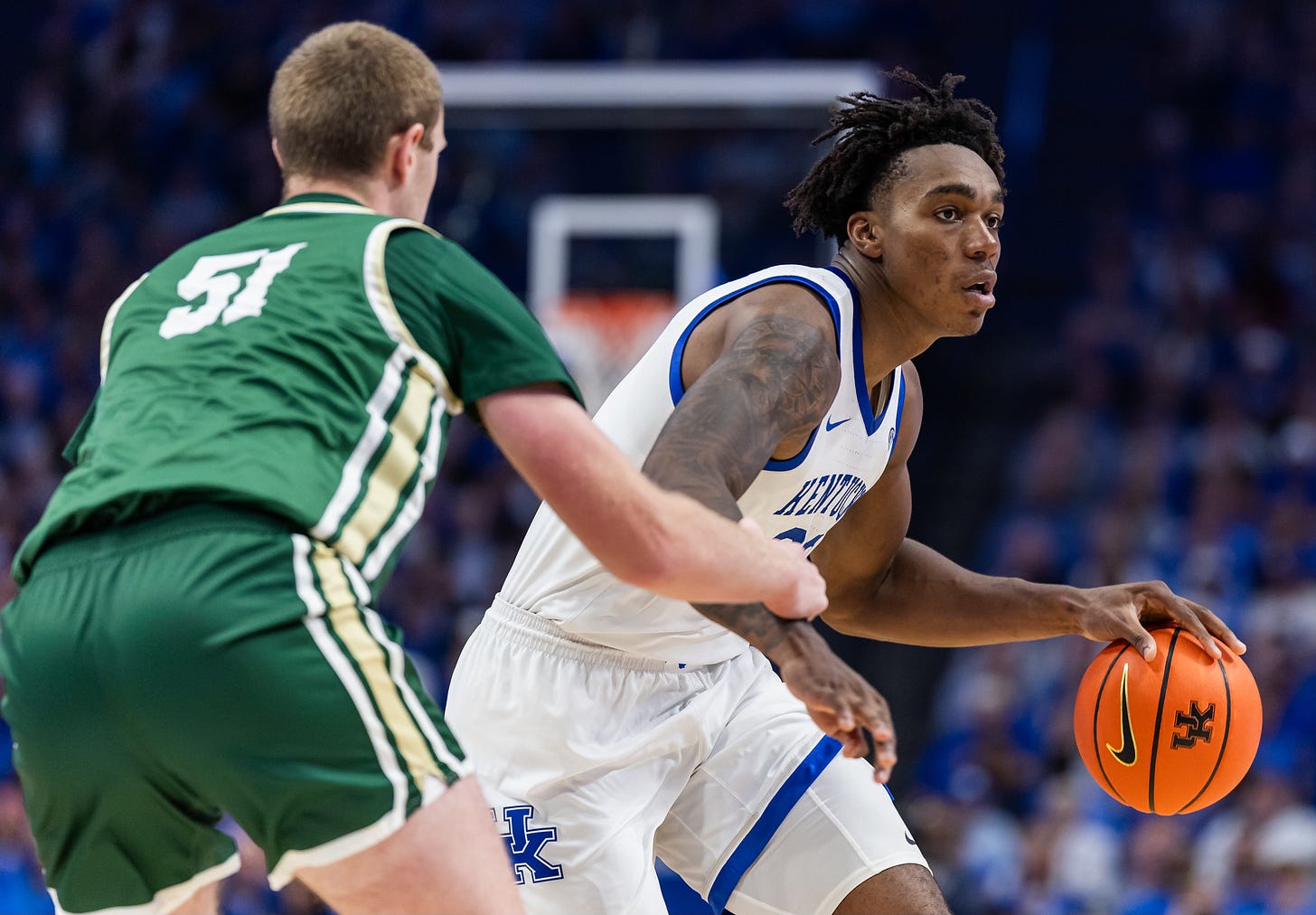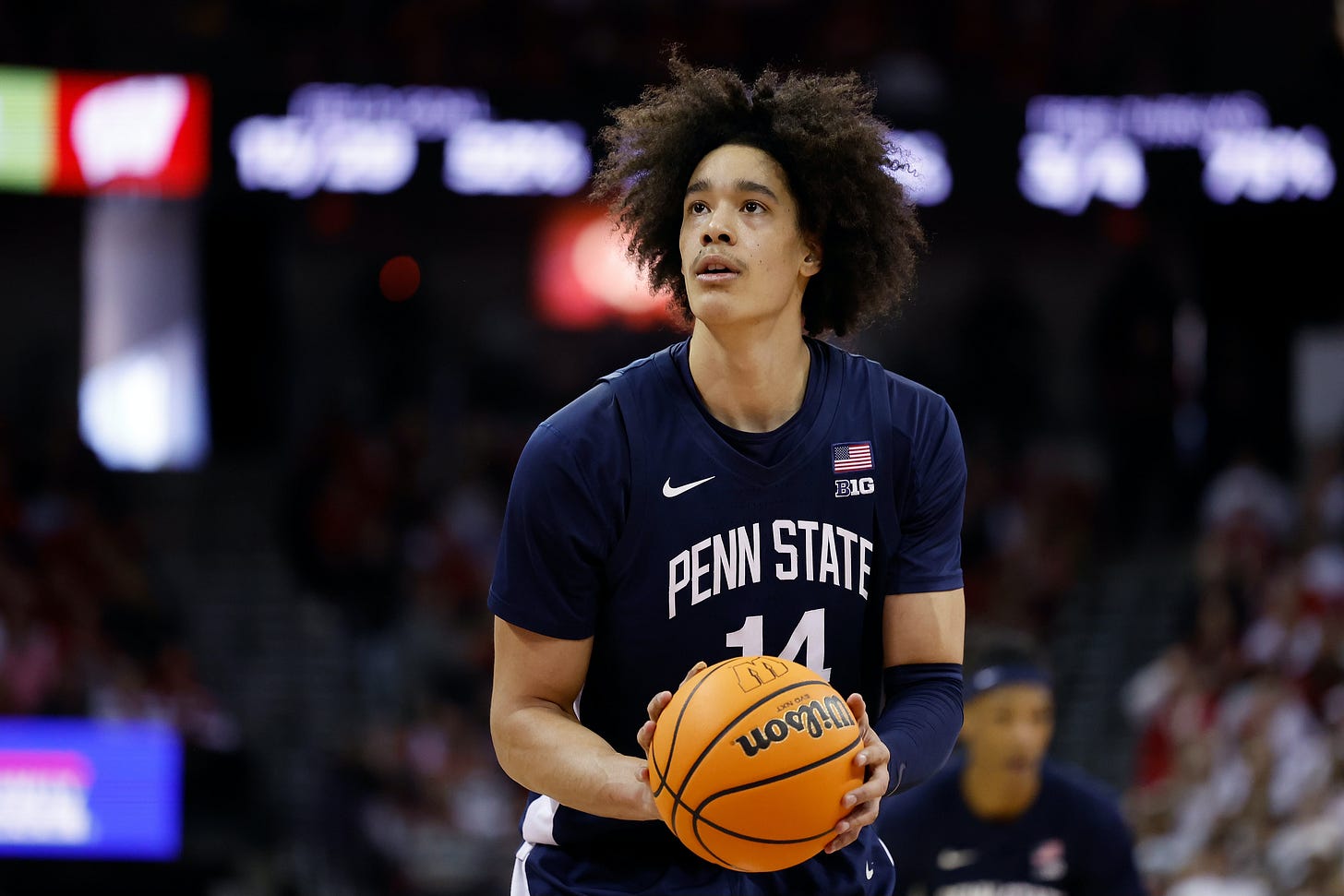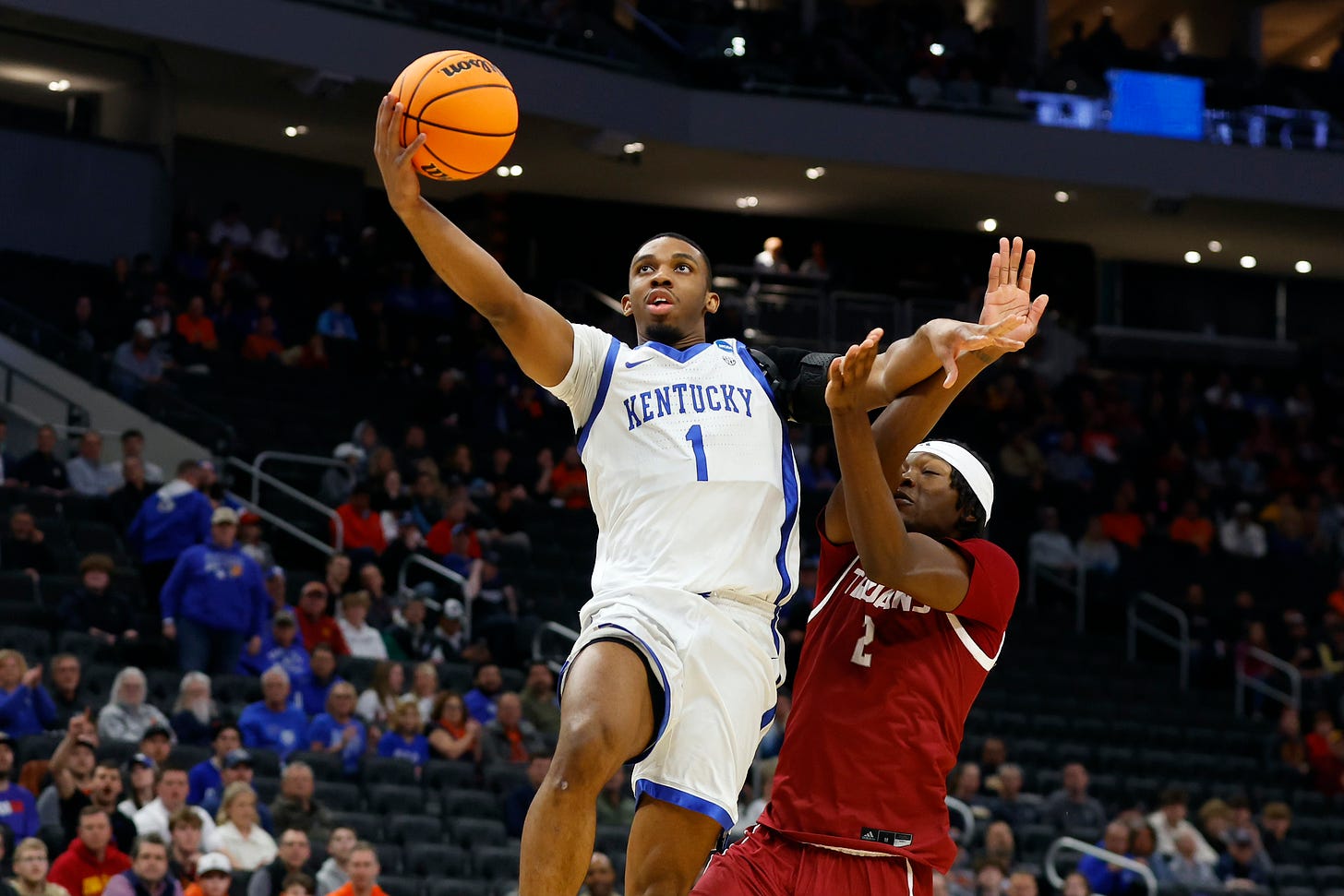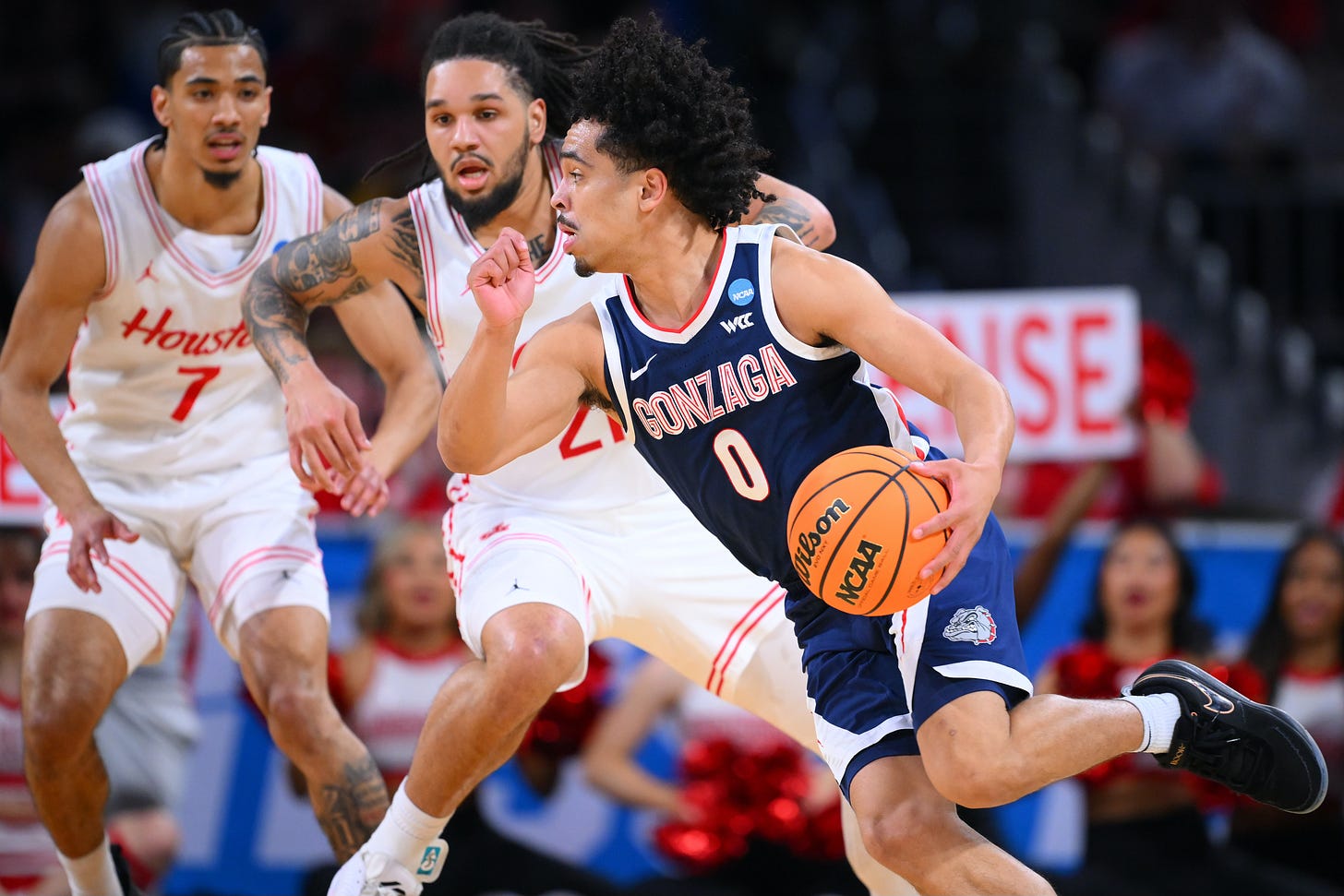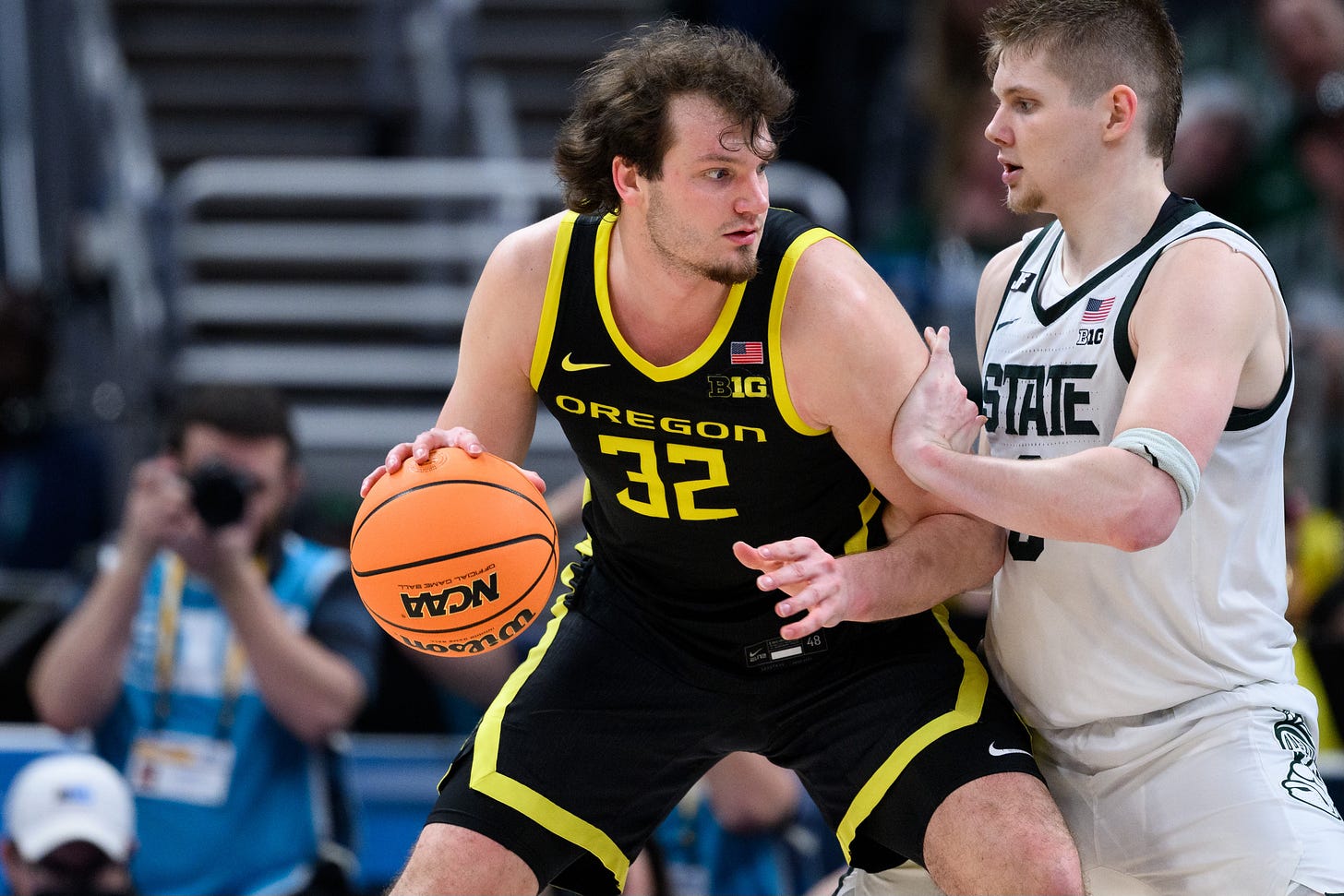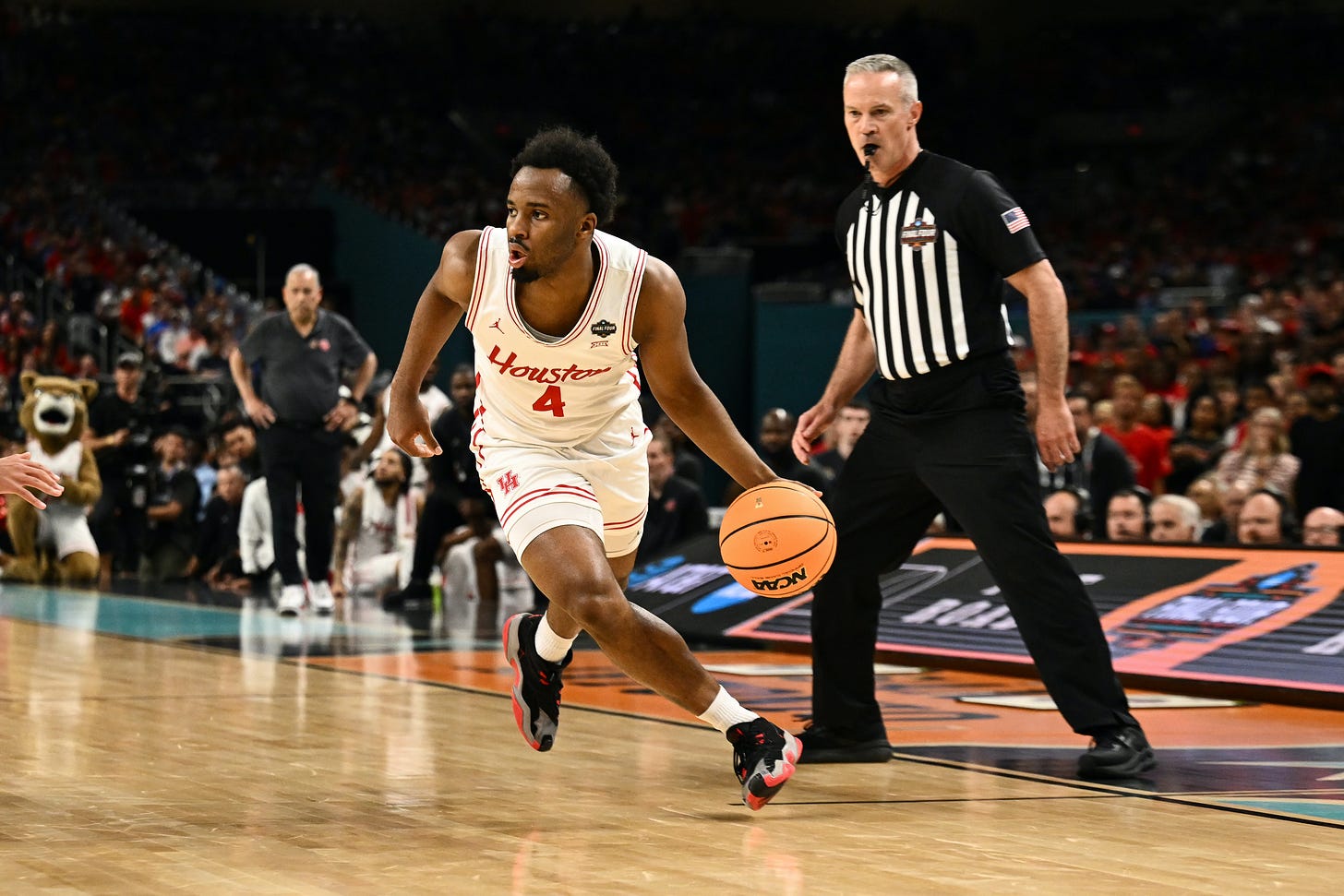Players to Watch at the G League Elite Camp
10 Prospects Who Could Earn a Spot at the NBA Combine
The G League Elite Camp in Chicago is one of the most important events on the pre-draft calendar for under-the-radar prospects looking to break into the 2025 NBA Draft conversation.
While it doesn’t carry the same buzz as the NBA Combine, it serves as a crucial proving ground—offering players a chance to perform in front of NBA executives, scouts, and decision-makers.
Every year, a select few standouts from the G League Elite Camp earn coveted invitations to the NBA Combine—an opportunity that can significantly boost their draft stock. These invites are often extended based on standout performances in the five-on-five scrimmages, strength and agility drills, and how well prospects handle playing in an NBA setting.
In this article, I highlight 10 players I'll be monitoring closely—breaking down what I like about their games, what they’ll need to prove to scouts in Chicago, and what it might take for them to earn that call-up to the Combine.
Chucky Hepburn
Louisville
Senior
Point Guard
6’2” | 190
Chucky Hepburn is a player I’ve followed closely since his freshman year of high school, when he dropped 40 points in a game that put him on my radar. He’s from my hometown of Omaha, Nebraska, and every time I visited during the holidays, I made it a point to catch his games—so I’m very familiar with his progression. After three years at Wisconsin, Hepburn transferred to Louisville for his senior season and put together the best year of his college career, averaging 16.4 points, 5.8 assists, and 3.5 rebounds while posting career-highs in scoring, playmaking, and efficiency.
Hepburn is a tough-nosed table setter who thrives on the defensive end. He was named the ACC Defensive Player of the Year, and his ability to apply ball pressure and make life difficult for opposing guards could earn him a look from NBA teams seeking defensive-minded backup guards. Offensively, he’s a steady floor general with good vision—evidenced by his near-6 assist average and a standout performance this season where he dished out 16 assists against SMU.
The key for Hepburn at the G League Elite Camp will be proving he can consistently knock down open shots. He shot 40% from three on five attempts per game as a sophomore at Wisconsin, but hasn’t matched that efficiency since. If he can show scouts that his jumper is reliable, while continuing to be a defensive pest and vocal leader, Hepburn has the potential to follow a similar path to Jose Alvarado and fight his way onto an NBA roster.
Malique Lewis
SE Melbourne (Australia)
Wing
6’8” | 195
Malique Lewis is another prospect I’ve been closely tracking over the last couple of years. He first caught my eye during the 2023–24 season with the Mexico City Capitanes in the G League, where he had several strong performances—most notably a 23-point game on 9-of-12 shooting, a 9-rebound outing against the Austin Spurs, and a 20-point, 12-rebound effort versus the Texas Legends. While his overall averages of 9.0 points, 6.0 rebounds, and 1.1 blocks over 34 games didn’t jump off the page, he shot an efficient 51% from the field and 38% from three—showing real flashes of 3-and-D potential.
Listed at 6'8" with a 7'1" wingspan, Lewis has the physical tools teams covet in switchable wings. He’s a fluid athlete capable of defending both forwards and wings, and his 2.3 stocks per game highlight his ability to disrupt plays defensively. Offensively, he showed he could make an impact not just as a spot-up shooter but also as a cutter and transition finisher. Last year, I felt he was a sleeper worth taking a chance on in the 2024 NBA Draft.
This past season, Lewis took his talents to the NBL in Australia with Southeast Melbourne. While his stock dipped due to shooting struggles—he averaged 6.9 points, 4.2 rebounds, and shot just 31% from three over 37 games—NBA teams clearly still believe in his upside, as evidenced by his G League Elite Camp invite.
To impress scouts this weekend, Lewis will need to knock down open threes and recapture the defensive impact he showed in the G League. With his size, length, and versatility, he fits the mold of a low-usage, multi-positional defender that every NBA team is looking for. A strong showing in Chicago could reignite the buzz around his NBA potential.
Caleb Love
Arizona
Senior
Combo Guard
6’4” | 205
If you’ve followed college basketball over the past few years, then Caleb Love needs no introduction. He’s one of only 13 players in NCAA history to score 1,000 points at two different schools—a testament to both his longevity and scoring ability. Love began his career at North Carolina, where he helped lead the Tar Heels to a Final Four appearance as a sophomore. And Duke fans will never forget—or forgive—his 28-point performance, clutch three-pointer, and late free throws that ended Coach Mike Krzyzewski’s legendary career in a heartbreaking loss to their crosstown rivals.
After three years at UNC, Love transferred to Arizona and finished his college career on a high note. He scored 29 points against fifth-seeded Oregon and dropped 35 in his final collegiate game—ironically, once again against Duke. Despite his high-profile résumé, Love was one of the most notable snubs from this year’s NBA Combine list, a surprising omission that sparked plenty of conversation online.
Love is a streaky but dangerous scorer capable of explosive offensive outbursts. When he’s hot, he can take over games with deep shooting and tough shot-making. But over five seasons and 174 college games, his efficiency has been inconsistent—he’s a career 38% shooter from the field and 32% from three. Even at last year’s NBA Combine, he averaged 8.5 points while shooting 31% from the floor and 30% from deep.
If Love wants to earn a call-up from the G League Elite Camp to the NBA Combine, he’ll need to catch fire and deliver one of his signature scoring performances. NBA scouts are already familiar with his game, so consistency and efficiency will be the key. A hot hand in Chicago could be all it takes to remind teams why he’s still one of the most dynamic scoring guards in this class.
Chance McMillan
Texas Tech
Senior
Guard
6’3” | 190
Texas Tech’s Chance McMillan turned heads this season with his elite efficiency, quietly establishing himself as one of the best shooters in the country. He averaged 14.2 points and 4.0 rebounds while shooting a blistering 52% from the field, 43% from three, and 88% from the free throw line. Over the course of his 155-game college career—split between Grand Canyon and Texas Tech—McMillan has knocked down over 40% of his 600+ three-point attempts, making his shooting the undeniable foundation of his NBA case.
McMillan's main appeal is clear: he can flat-out shoot the basketball. His consistency from deep, whether off the catch or pulling up, makes him a potential floor-spacer at the next level. But what could elevate his stock at the G League Elite Camp is showing there’s more to his game. If McMillan can flash some secondary playmaking—making reads out of pick-and-rolls, attacking closeouts, or facilitating in transition—it may prove to scouts that he’s more than just a specialist.
At the very least, McMillan’s shooting will earn him a long look. But if he can pair that with added versatility and decision-making at the Elite Camp, it could be enough to secure him an NBA Combine invite.
Jacksen Moni
North Dakota State
Senior
Forward
6’10” | 235
The G League Elite Camp was built for under-the-radar prospects like Jacksen Moni. A true late bloomer, Moni spent three seasons at Division II Northern State before transferring to North Dakota State for his final year of eligibility. In his lone season of Division I basketball, he wasted no time making an impression—emerging as one of the most skilled and efficient big men in the country.
Moni averaged 20.6 points, 5.6 rebounds, and 3.7 assists per game while shooting 50% from the field, 40% from three, and 83% from the free-throw line. At 6'10", he checks a lot of modern forward boxes—he’s mobile, coordinated, and comfortable putting the ball on the floor. He’s especially dangerous as a pick-and-pop threat, shooting 40% from deep on nearly six attempts per game. He can create his own shot off the dribble, a rare skill for a player his size, and has proven to be a capable playmaker from the elbows and high post.
Unfortunately, Moni’s senior campaign was cut short by a hand injury, but not before he closed strong—scoring 27 or more points in three of his final four games. The Elite Camp will give NBA scouts their first live look at Moni, who likely flew under the radar during the season due to his school and injury. If he can pick up where he left off and show that his combination of size, skill, and shooting translates against tougher competition, he could become one of the camp’s biggest surprises.
Amari Williams
Kentucky
Senior
Center
7’0” | 260
I was genuinely surprised that Amari Williams didn’t receive an invite to the NBA Combine—especially considering I view him as a draftable prospect with real second-round value. This past season, Williams averaged 10.9 points, 8.5 rebounds, 3.2 assists, and 1.2 blocks per game, showcasing the versatility and productivity he’s developed over the last three years. His growth is especially notable given his humble beginnings—he appeared in only 15 games as a freshman, averaging just 1 point and 1 rebound per contest.
At 7 feet tall with a well-rounded skill set, Williams offers legitimate NBA potential as a rebounder, passer, and interior defender. He set a program record for assists by a 7-footer in his lone season at Kentucky and became only the second player in SEC history to tally at least 375 points, 300 rebounds, 100 assists, 40 blocks, and 20 steals in a season—the other being Auburn’s Johni Broome, who was invited to the Combine.
Williams’ ability to pass out of the post and find cutters gives him unique value as a connector from the center spot. While he finished the season shooting 56% from the field, he did show some inconsistency finishing around the rim, occasionally missing easy looks. He also doesn’t stretch the floor, but his feel for the game and defensive instincts still make him intriguing.
At the Elite Camp, Williams will need to do what he does best: clean the glass, protect the rim, and showcase his vision as a passer. If he checks those boxes, it wouldn’t be a surprise to see his name added to the Combine list by the end of the weekend—and eventually to an NBA roster in need of depth at the five.
Yanic Niederhauser
Penn State
Junior
Center
7’0” | 250
Penn State’s Yanic Konan Niederhauser quietly caught the attention of NBA scouts with his performance this season—his first after transferring from Northern Illinois. The Swiss native made a strong leap in competition, but it didn’t slow his production. In fact, his numbers improved significantly. He averaged 12.9 points, 6.3 rebounds, and 2.3 blocks per game while shooting an efficient 61% from the floor—up from 7.3 points per game the year prior.
Niederhauser is an intriguing upside swing due to his physical tools and steady development. As a freshman, he averaged just 2.2 points and shot 43% from the field. Fast forward a few years, and he’s developed into a reliable rim protector while providing vertical spacing as a lob threat. His athleticism and shot blocking make him a natural fit in a modern NBA frontcourt, especially in lineups built around downhill playmakers.
While still a bit raw offensively and limited outside the paint, Niederhauser has the tools to carve out a role as a rim-running big. His appearance at the G League Elite Camp is a win-win scenario: if he plays well, he could earn an NBA Combine invite and boost his stock; if he struggles, he’s expected to return to Penn State, where he can continue developing and building off the experience. Either way, he remains a prospect worth tracking closely due to his combination of size, athleticism, and defensive potential.
Lamont Butler
Kentucky
Senior
Point Guard
6’2” | 210
Another player I’m looking forward to seeing at the G League Elite Camp is Kentucky’s Lamont Butler—but more importantly, a healthy Lamont Butler. Injuries disrupted what was shaping up to be a career year for the veteran guard, who transferred from San Diego State after helping lead the Aztecs to the national title game in 2023. Despite playing in only 27 games, Butler averaged 11.4 points and 4.3 assists while shooting an impressive 49.8% from the field and 39% from three—by far the best shooting numbers of his college career.
The jump in perimeter shooting was particularly noteworthy. Butler shot just 30% from deep in his final year at San Diego State and had never topped 34% from three prior to this season. His 39% mark from behind the arc at Kentucky suggested real improvement and gave scouts a reason to reconsider his offensive upside. When healthy, Butler looked like one of the best two-way guards in the country.
Butler’s calling card, though, remains his defense. He’s a physical, aggressive point-of-attack defender who takes pride in getting stops. He’s wired to compete and plays with the intensity NBA teams crave from backup point guards. Think of the kind of role Jamal Shead carved out with the Toronto Raptors—Butler has the tools to follow a similar path.
To earn an NBA Combine invite, Butler needs to show scouts that he’s healthy and ready to contribute. If he can run a team, knock down open shots, and bring his trademark defensive intensity, he could easily rise up boards as one of the more complete veteran guards in the camp.
Ryan Nembhard
Gonzaga
Senior
Point Guard
6’0” | 180
Players invited to the G League Elite Camp should be hoping they land on the same team as Gonzaga’s Ryan Nembhard. The nation’s leader in assists this season at 9.8 per game, Nembhard is a true floor general who can make life easier for teammates looking to catch the eyes of NBA scouts. Over his four-year college career—split between Creighton and Gonzaga—he averaged 11.7 points and 6.6 assists while establishing himself as one of the best pure point guards in the country.
This season, Nembhard flirted with a double-double average while also showing real growth as a shooter. He knocked down 40% of his threes—up from 32% the previous year—and averaged 1.7 steals per game. While he may be undersized for the NBA, his ability to control the game, take care of the ball, and elevate others gives him a real shot to stick. His 4.0 assist-to-turnover ratio this season speaks to his decision-making and discipline—qualities NBA teams value highly in backup point guards.
To earn an NBA Combine invite, Nembhard needs to prove that his improved shooting isn’t a fluke. The 8% jump in his three-point shooting year-over-year is promising, but scouts will want to see if it holds up under pressure and against pro-level competition. If he can continue to shoot it well, run a team with poise, and create quality looks for others, Nembhard could follow in the footsteps of his older brother Andrew, who also used the G League Elite Camp as a springboard to an NBA opportunity.
If you’re a rim-running big, Ryan Nembhard might just be your best friend this weekend.
Nate Bittle
Oregon
Senior
Center
7’0” | 220
Oregon’s Nate Bittle entered college as one of the most highly touted recruits in the 2021 class—a five-star prospect, McDonald’s All-American, and participant in both the Jordan Brand Classic and Nike Hoop Summit. After an underwhelming start to his college career that saw him average just 1.7 points per game as a freshman, Bittle finally showed why he carried so much hype. This season, he averaged 14.2 points, 7.6 rebounds, 1.9 assists, and 2.1 blocks per game, putting together the most complete season of his career.
Bittle led the Big Ten in blocks and ranked among the top 20 shot blockers in the nation, earning Big Ten All-Defensive Team honors. At 7-feet tall, he brings positional size, mobility, and rim protection, while also flashing offensive versatility. He made 36 threes on the season, showing promise as a potential floor spacer. What makes Bittle even more intriguing is his feel—he’s a sneaky good passer for his size and capable of making advanced reads out of the post.
The key for Bittle at the G League Elite Camp will be proving his three-point shot is legit and consistent enough to translate. If he can stretch the floor and protect the rim while continuing to show flashes as a playmaker, he’ll give NBA teams something to think about. While he does have another year of eligibility remaining, the Elite Camp gives him an opportunity to test the waters, gauge interest, and see where he stands.
Given his unique combination of size, shot blocking, and emerging skill, Bittle could use this platform to raise his stock—but the more likely outcome is a return to Oregon for a fifth year, where he could further cement his status as an NBA prospect.
Elite Résumé, No Invite: The Case for LJ Cryer
LJ Cryer
Houston
Senior
Guard
6’1” | 200
One player I’m genuinely surprised and disappointed to see left off the G League Elite Camp invite list is Houston’s LJ Cryer. Now, close your eyes and imagine this résumé: a guard who’s averaged at least 15 points per game in three consecutive seasons, posted 13.5 points over 147 career games, and shot 41% from three on 927 attempts. Not only was Cryer one of the most prolific three-point shooters in the country, but he consistently contributed to winning. Cryer's collegiate teams achieved remarkable success during his five-year career at Baylor and Houston. His teams amassed a combined record of 133 wins and 29 losses
His accolades include a national championship with Baylor in 2021, two Final Four appearances, three All-Big 12 honors, and recognition as a third-team All-American by multiple outlets. This past season, he led a Houston team that reached the national title game in scoring (15.7 ppg), three-point makes, three-point percentage, and free throw percentage—while finishing top 20 nationally in three-point accuracy. Cryer dropped 19 points in the national championship game against Florida and poured in 26 points on 6-of-9 shooting from deep in a comeback win over Duke in the Elite Eight.
Yes, he’s undersized at 6'1" and has spent most of his college career playing off the ball, but with that level of production, efficiency, and big-game experience, it’s hard to understand how he didn’t receive an invite. Few players in this class have a résumé as deep and decorated as LJ Cryer’s—and his omission from the G League Elite Camp is one of the most surprising snubs of the cycle.


